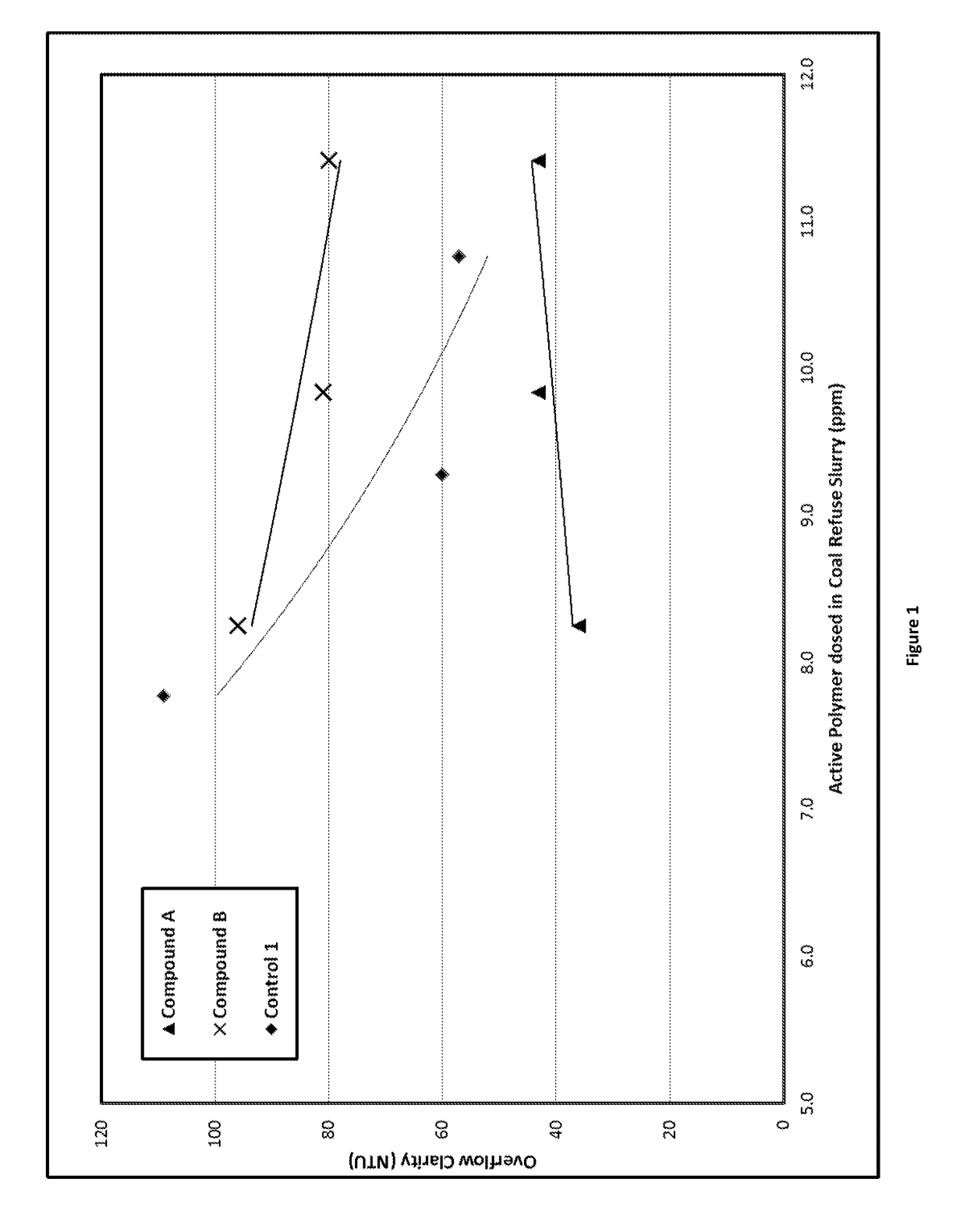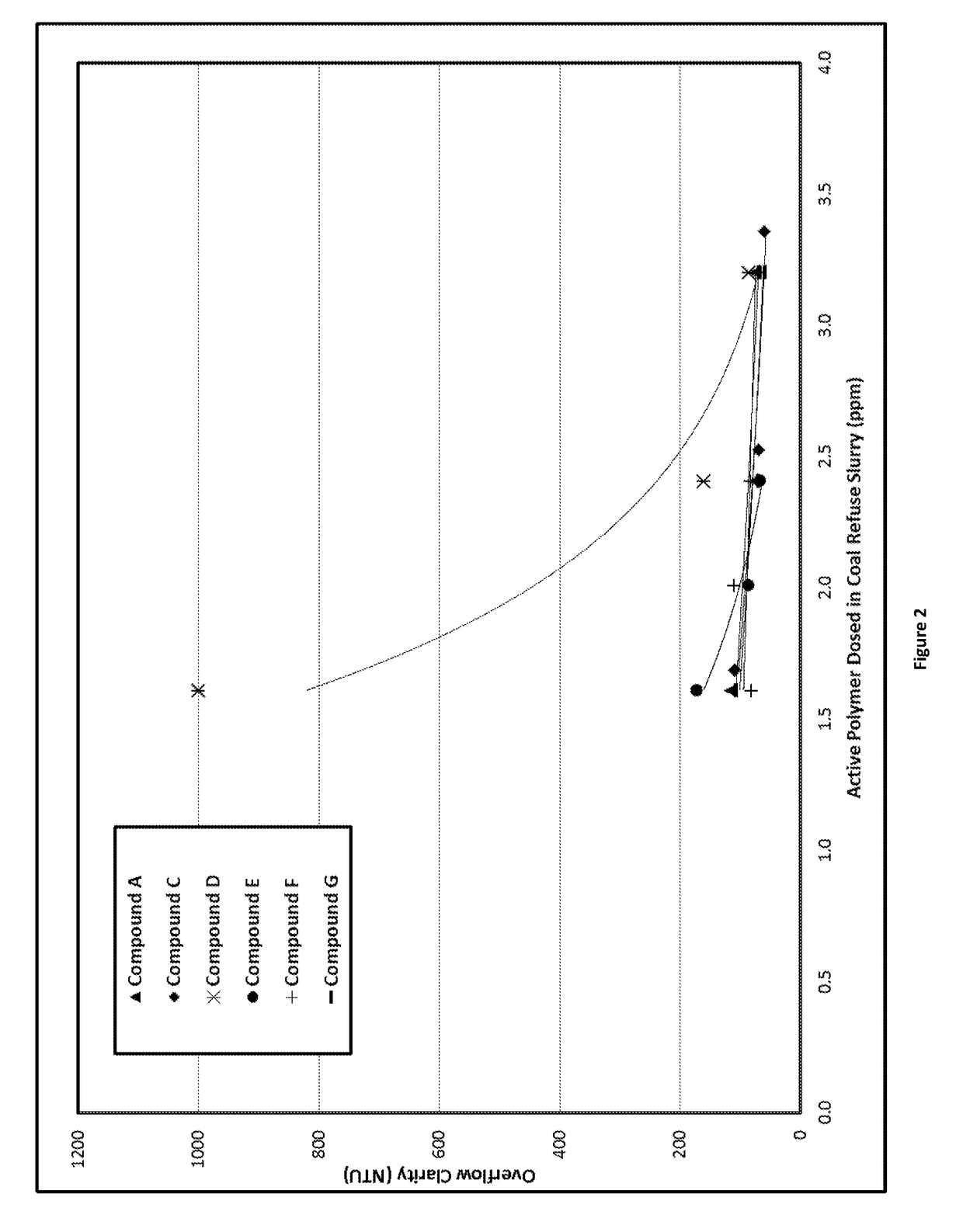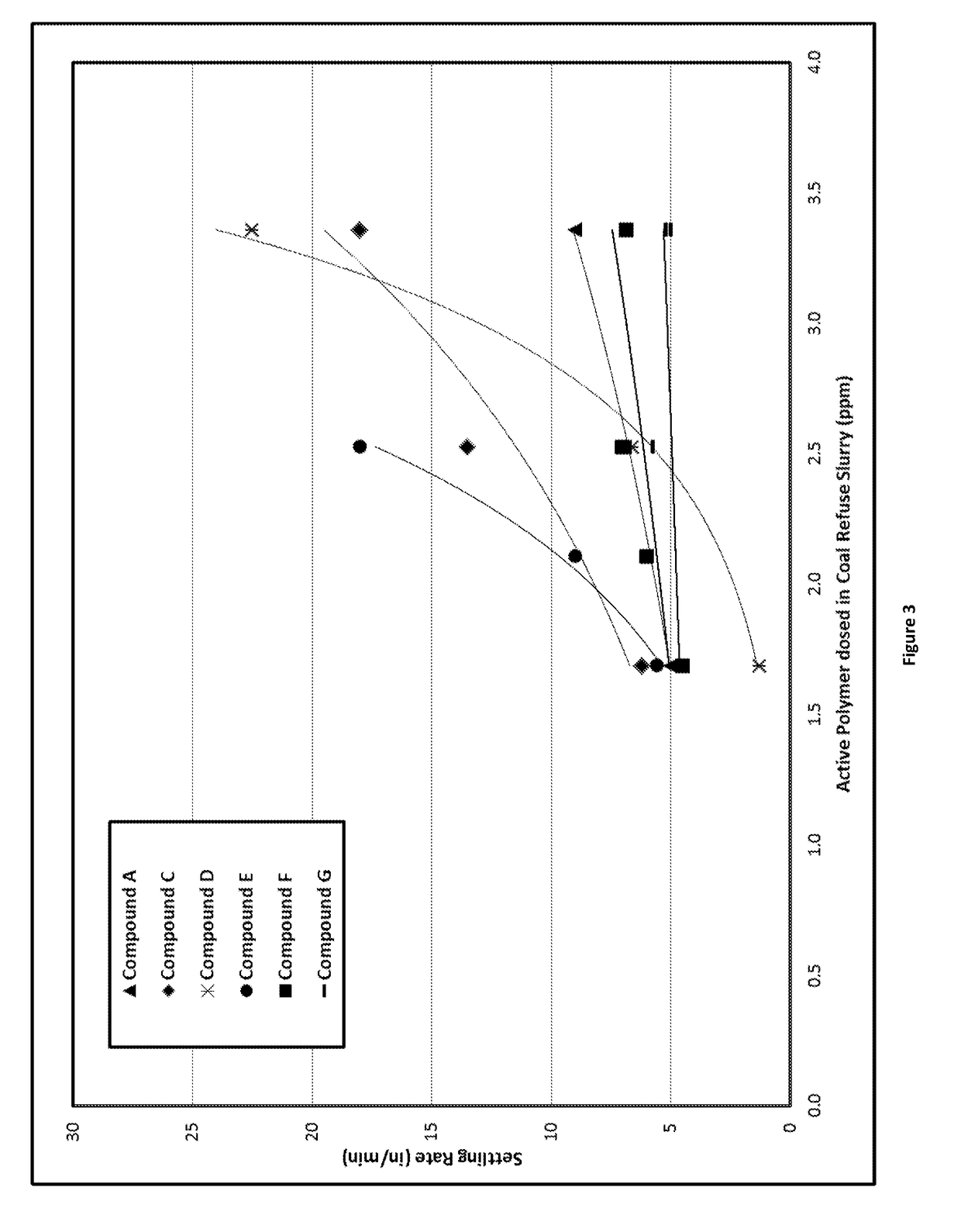Method for Improving Overflow Clarity in Production of Coal
a technology for overflow and clarity, which is applied in the direction of quary waste water treatment, water/sludge/sewage treatment, chemistry apparatus and processes, etc. it can solve the problems of inability to discharge in its untreated form, regulation, and the flotation process producing a refuse stream (e.g. coal refuse). it reduces the specific viscosity
- Summary
- Abstract
- Description
- Claims
- Application Information
AI Technical Summary
Benefits of technology
Problems solved by technology
Method used
Image
Examples
example 1
[0045]FIG. 1 graphically illustrates the resulting top layer (labeled “overflow”) clarity of treated coal refuse via the cylinder tests described herein. The data points and fitted lines show that a dose of Compound A at approximately 8.25 ppm actives, compared to a dose of 7.78 ppm actives of Control 1 and 8.25 ppm actives of Compound B, resulted in a clarity of less than 40 NTU, which is approximately 3 times more clear than Control 1.
example 2
[0046]FIG. 2 graphically illustrates various compounds related to Compound A. Of note, Compounds D and G fall outside the about 18 to about 30 RSV range, with Compound G having an RSV of 12.5, and Compound D having an RSV of 39.6. FIG. 2 demonstrates that the anionic acrylate-acrylamide copolymer of the transitional treatment composition should have an RSV of about 18 to about 30, and a weight average molecular weight of about 4 million to about 7 million Daltons, which is surprising and contrary to the prevailing belief in the art
example 3
[0047]FIG. 3 graphically illustrates settling rate of the bottom layer versus actives dosage of Compounds A, C, D, E, F, and G. Settling rates of at least 10 inches per minute were achieved for certain doses of Compounds C, D, and E, though Compound D did not provide sufficient clarity in the top layer (see Example 2).
PUM
| Property | Measurement | Unit |
|---|---|---|
| Mass | aaaaa | aaaaa |
| Specific volume | aaaaa | aaaaa |
| Specific volume | aaaaa | aaaaa |
Abstract
Description
Claims
Application Information
 Login to View More
Login to View More - R&D
- Intellectual Property
- Life Sciences
- Materials
- Tech Scout
- Unparalleled Data Quality
- Higher Quality Content
- 60% Fewer Hallucinations
Browse by: Latest US Patents, China's latest patents, Technical Efficacy Thesaurus, Application Domain, Technology Topic, Popular Technical Reports.
© 2025 PatSnap. All rights reserved.Legal|Privacy policy|Modern Slavery Act Transparency Statement|Sitemap|About US| Contact US: help@patsnap.com



